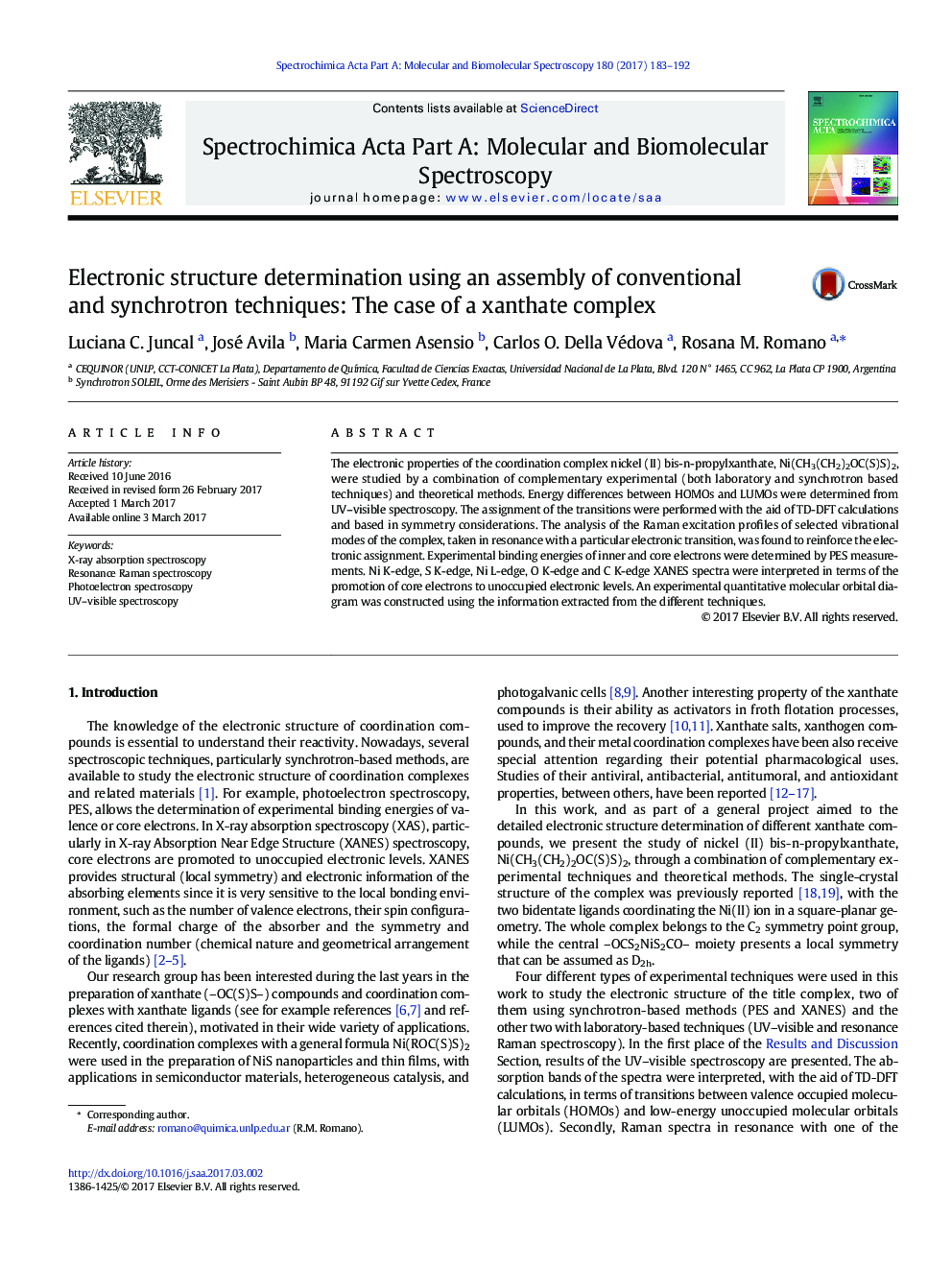| Article ID | Journal | Published Year | Pages | File Type |
|---|---|---|---|---|
| 5139583 | Spectrochimica Acta Part A: Molecular and Biomolecular Spectroscopy | 2017 | 10 Pages |
â¢A molecular orbital diagram was constructed combining different spectroscopiesâ¢Experimental binding energies of inner and core electrons were determined by PESâ¢XANES spectra were interpreted in terms of the promotion of core electrons to unoccupied electronic levelsâ¢Energy differences between HOMOs and LUMOs were determined from UV-visible spectroscopyâ¢The electronic assignment was reinforced by the analysis of Raman excitation profiles
The electronic properties of the coordination complex nickel (II) bis-n-propylxanthate, Ni(CH3(CH2)2OC(S)S)2, were studied by a combination of complementary experimental (both laboratory and synchrotron based techniques) and theoretical methods. Energy differences between HOMOs and LUMOs were determined from UV-visible spectroscopy. The assignment of the transitions were performed with the aid of TD-DFT calculations and based in symmetry considerations. The analysis of the Raman excitation profiles of selected vibrational modes of the complex, taken in resonance with a particular electronic transition, was found to reinforce the electronic assignment. Experimental binding energies of inner and core electrons were determined by PES measurements. Ni K-edge, S K-edge, Ni L-edge, O K-edge and C K-edge XANES spectra were interpreted in terms of the promotion of core electrons to unoccupied electronic levels. An experimental quantitative molecular orbital diagram was constructed using the information extracted from the different techniques.
Graphical abstractDownload high-res image (262KB)Download full-size image
